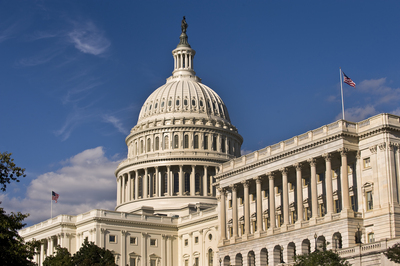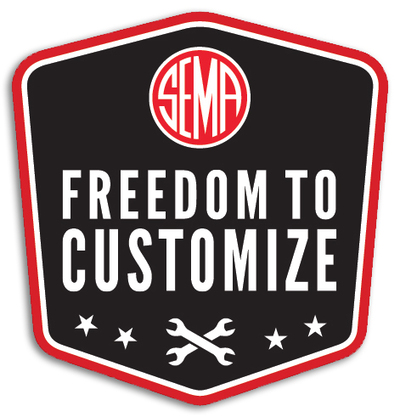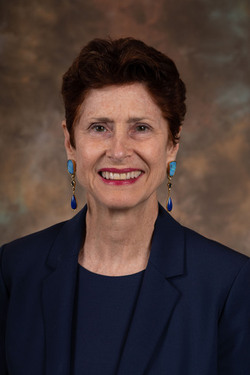BUSINESS
Protecting the Freedom to Customize
SEMA Board Member Kim Pendergast Explains the Association’s New Individual Membership Program
By Mike Imlay

From the earliest days, the automobile and its surrounding lifestyle have been about freedom. However, recent years have seen a growing assault on many of the freedoms consumers, hobbyists and recreational enthusiasts have come to enjoy.
Twelve states have signaled an intent to ban gas-powered engines, and the Environmental Protection Agency (EPA) is stepping up emissions enforcement in all 50 states. Legislation has placed hundreds of thousands of acres off limits to off-roading. Meanwhile, OEMs are locking consumers and the aftermarket out of vehicle computers, limiting the ability to customize.
SEMA has always been an industry advocate, but its founding purpose was to facilitate business between members. Now there are external forces shaking the industry’s core that can’t be stopped by SEMA alone. Consequently, the association amended its bylaws to launch the SEMA Individual Membership (SIM) program. Designed for the car lover, the overlander, the restorer, the adrenaline junkie and even the weekend warrior, the program seeks to build an enthusiast network, expand political action committee [PAC] fundraising, and grow the industry’s voice at local, state and federal levels.
“This isn’t just your standard networking initiative being created by any old organization,” said Nathan Ridnouer, SEMA vice president of councils and membership. “We’re creating something fun, educational and impactful. In the automotive world, it’s easy to be a car or truck hobbyist without knowing all the different small to large issues out there threatening your right to modify, customize and enjoy your vehicle.
“We don’t want our enthusiasts to face a day where they encounter roadblocks to those freedoms. In addition, we want to instill knowledge and confidence about the many ways they can safely enhance their rides, from lifts to wheels to styling and comfort features.”
Magnuson Superchargers CEO Kim Pendergast, who serves on the SEMA Board of Directors, helped spearhead the SIM initiative. To better understand the program’s origins and goals, SEMA News reached out to Pendergast with several key questions. The following is our interview, edited for clarity and conciseness.

SEMA individual members receive gearhead-inspired “Freedom to Customize” decals to apply to their favorite vehicles. SEMA hopes the decals will quickly become ubiquitous sightings on the nation’s roadways.
SEMA News: Can you give our readers some background on why the SEMA Board of Directors greenlit this program?
Kim Pendergast: The history of how the program unfolded is very pertinent to where SEMA is going. Being involved with the SEMA Political Action Committee [SEMA PAC] for SEMA-member businesses, I and other Board members felt that we would never get our message across to legislators through the PAC alone. We needed the government to realize that our approximately 6,000 business owners and their people represent a much wider demographic.
There are eight million hardcore performance consumers who modify their cars every year, so I’ve always said we represent eight million people. But in reality, about one-third of all consumers who drive also modify their cars in some way. That means our potential audience is actually about 60 million people.
When legislators are concerned about issues such as zero emissions, noise or whatever else, they need to understand that there is an extremely large constituency their legislation affects. The number of automotive enthusiasts is far greater than just our businesses, and the only way legislators will understand is when voters call and tell them.
We’ve always had the SEMA Action Network for car-hobby enthusiasts, but we need to build on that and mobilize a group that’s more representative of the large number of people touched by legislation. I don’t think Washington, D.C., understands the size and importance of the audience.
SN: What are some of the things at stake for SEMA and our consumers?

SEMA Board member and Magnuson Superchargers CEO Kim Pendergast.
KP: SEMA began as a business-to-business trade association. We’ve done an amazing job of building that side of our industry, and that’s really important. But now legislation and other outside forces are impinging on our industry and our customers. For example, there’s recreational areas such as Oceano Dunes, California, where they’re trying to take away off-road activities. Then there’s also the right to modify vehicles for dedicated racing. We’ve become the whipping boy for the EPA and climate activism.
At the same time, OEMs are safety-conscious, which is good. However, in being so, they are locking us out of their platforms. The fact is, OEMs can separate out the modification and calibration ranges that are safe for us, but it’s going to cost them a little bit of money, so why should they do that? That’s another area where we must keep our eye on the ball.
We need external support for our industry as much as internal, because the world has changed. Those changes could also limit consumer choices and drive up vehicle prices. They could lose their freedom of modifying their vehicles because of legislation and regulation, and the OEMs could also very quietly take back this $47-billion industry and make it impossible for us to modify powertrains, wheels and tires and everything down to your fuzzy dice.
People need to hear our community’s voice. SEMA Individual Memberships give enthusiasts—our customers—the opportunity to protect their right to modify, their hobby, their industry, their family outings and their love of the automobile and the ability to enjoy it with their families.
SN: How does the individual membership program accomplish those things?
KP: We’re empowering consumers, enthusiasts and others with a stake in our industry to link with their legislators. There are many hobbyists and people who may not identify themselves as performance consumers but still enjoy what our industry does. There are also many individuals at all levels of our industry whose livelihoods depend on a thriving aftermarket. Those and many others are going to be impacted by the issues we’re discussing.
Maybe they see what’s happening through the media or maybe they’re not even aware, but let’s say an individual is aware. What can that individual do? They may think, “I’m just one person, right?”
The SIM program will educate them and connect them to decision-makers. We’re bringing them into our community in a way we never could before because the technology just wasn’t there. Now, with the internet and social media, we can welcome our enthusiast-consumers into our very cool industry and make them a part of something special.
They’ll get emails, marketing information and alerts as to what’s happening and who to call or contact and when. Now, instead of having a few hundred or even a thousand people engaged, we can have three million contacting their representatives. Numbers matter. There is a large community that knows we’re not out to harm the environment, limit safety or hinder technology, but they’re afraid to speak up or don’t know how. We’ll help them do it.
SN: Let’s talk a little more about the membership benefits. What do new members get for joining?
KP: Currently, when charter members sign up, they get a recognition letter, a member identification card, an exclusive SIM baseball cap and a “Right to Customize” decal they can place prominently on their vehicles. Individual membership also allows them to support SEMA PAC. Of course, they also begin receiving the member communications I’ve mentioned.
Other benefits are still in development and not yet ready for announcement, but they’ll be tangible and valuable for our enthusiast base. I should add that we’ve made a conscious decision to pilot this program and listen and learn what our consumers want. SEMA has a lot of business-to-business experience, so we know what trade professionals want and how to communicate with them. Consumers, of course, are a very different audience for a trade association like ours.
SN: So there are already plans to continue growing this program over time?
KP: Yes. A gradual rollout of the program allows us to begin talking with our individual membership and obtain feedback. The more people we get involved, the more we’ll be able to do for them.
We’re already exploring a number of potential new benefits, including ways to deliver special promotions, such as discounts and participation in exclusive SEMA events and programs. The possibilities are endless. Ultimately, we’re forming a vast club—a grassroots organization of people with a common goal, a common purpose and a common hobby.
It’s interesting to note that about 70% of our charter members tell us their motivation is to protect the hobby. Another 20% or so say they just want to be a part of the SEMA name. We have a great, untapped following that supports what we do and is excited by the SEMA brand.
SN: In a nutshell, what’s the chief difference between the traditional SEMA business membership and the new individual membership?
KP: They address two different goals. The business membership is about supporting the history of SEMA, its B2B relationships and all the things that SEMA has always been. A business joins for itself and for all of its employees. Every employee gets access to the research, the councils, the business resources and all the things that the association offers.
The individual membership is very much about supporting the industry. Individual membership money is not going to SEMA in support of the trade members to sell to each other, our standard model. Instead, these membership dollars are specifically for building awareness, understanding and connections to the legislators and OEMs who will decide our future. It’s aimed at educating them and ensuring that they have all the information to make the best impact for us all.
SN: What is the relationship between an individual membership and SEMA PAC?
KP: There is a tremendous amount of legislation around a political action committee [PAC] to ensure that people are appropriately donating money. Because of that, there are a lot of necessary obstacles to sign up as a SEMA PAC member and make donations. For a business, you are not just signing yourself up; you are really signing your whole business up when you join a PAC.
For SEMA that means company owners who donate to our PAC rarely have employees or other stakeholders also making donations. Maybe there are 500 people who work for an organization. We don’t get to those 500 people. We don’t get to 30 people or even five people in an organization. It usually ends up being just one person signing up and writing a fairly large check, usually $1,500. That’s a significant hurdle for other potential donors, so we’re not really accessing all the people we could for fundraising.
Opening SEMA to individual members changes all that. What if we have eight million people sign up for individual memberships and donate $10 each to our efforts? That’s $80 million. Even more important than the money is letting Congress know there are those eight million voters. That’s a larger voice saying how important our issues are and presenting a balanced view that legislators certainly aren’t getting from the other side. That’s why the SIM program is so critical.
SN: We understand that the SIM program also has an Ambassador component. Can you talk about that?
KP: When we launched our SIM initiative, we began seeing industry companies asking how they can join in promoting the program and recruiting individual members, so we built this Ambassador program to help our companies reach out to their consumers as SEMA Ambassadors. The program is looking at different digital tools to help them spread the word through social media as well as customized materials they can hand out at events or include with the products they ship to customers. We’re also encouraging them to get their employees involved. So far, we have 50 Ambassadors, but we’re aiming for 1,000 or more.
We know that SEMA can’t do this alone, and we very much appreciate the support our Ambassadors are providing.
SN: Finally, the Performance Racing Industry (PRI) has a similar individual membership program. Some people might ask why they should choose between the two or perhaps consider signing up for both. How would you answer them?
KP: I like to credit [PRI President] Dr. Jamie Meyer with the idea for both programs. I had a conversation with him when he first became a SEMA Board member, and he mentioned the idea. It just stuck with me. When he became president of PRI and I assumed his place on the SEMA Board, I saw an opportunity to push his vision forward.
To answer the question, though, SEMA serves many different audiences, among which are racers. We represent the broad spectrum of the specialty equipment that consumers can choose for their vehicles. PRI is motorsports- and racing-
centric, with very engaged professional and semi-professional racing elements. Each association has its own special needs, and each membership program is tailored to its audience and the specific issues they care about. From time to time, SEMA and PRI priorities overlap, and our programs will work in tandem in those cases to the benefit of all our enthusiasts.
 Protect Your Automotive Passions!
Protect Your Automotive Passions!
EPA overreach. Electric-vehicle mandates. The right to modify a vehicle. Those are just a few examples of how automotive enthusiast rights are being threatened around the United States. For the first time ever, individuals can now officially join SEMA and help win the fiercest battles for their right to enjoy their automotive passions. For further information or to sign up with the SEMA Individual Membership program, go to www.sema.org/individual-membership.






